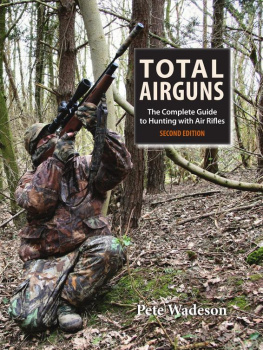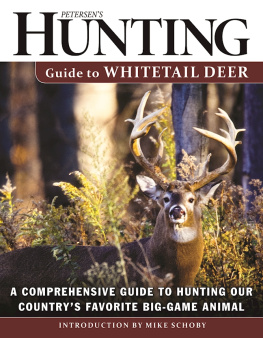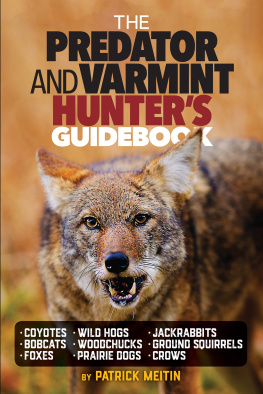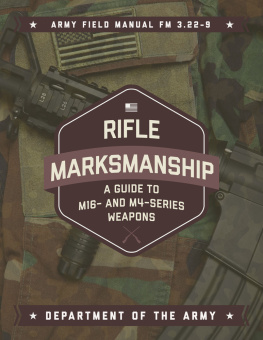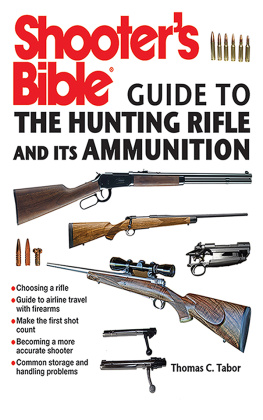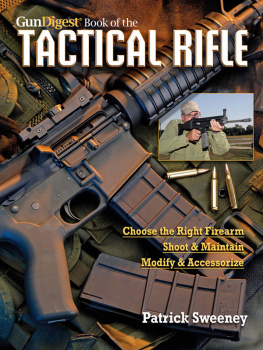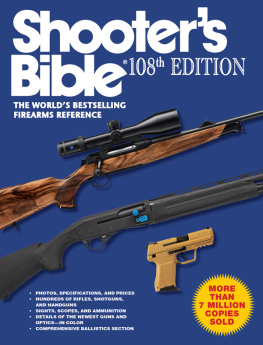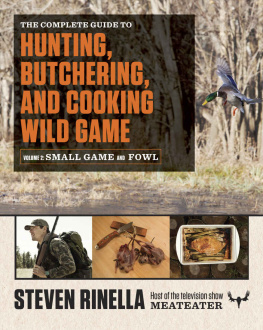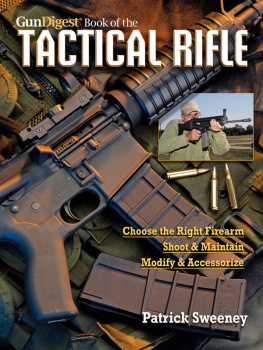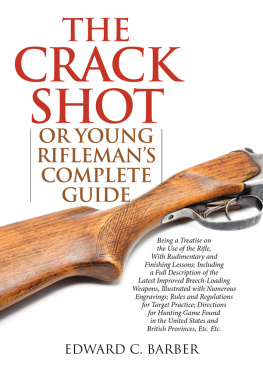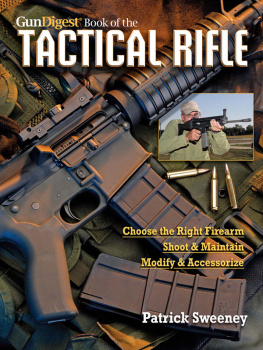I didnt by any stretch of the imagination grow up in what you could term a rural area. Even so, it was considered the norm to be given your very own air rifle as a birthday or Christmas present when you reached your teenage years. It was, in a sense, a rite of passage an acceptance by your parents and elders that you were growing up. In todays climate of rising crime and widespread anti-gun hysteria, fuelled by confused news media, it seems difficult to believe that those days ever existed. Im sure many hunters of all shooting disciplines can identify with that.
Looking back to carefree times blatting rats with a break-barrel air rifle at the side of the canal with my mates I would never have envisaged the day would come when Id be writing such a comprehensive book on the now-serious discipline of hunting with an air rifle.
As I have been given this opportunity, I hope that what follows will be seen by the sensible non-shooting public, as well as my friends, associates and peers in the shooting fraternity, as a considered and well-informed book on the sport. Because thats what it is a sport. Additionally, there are many occasions when an air rifle of suitable power is a very effective tool for pest control, being widely used by professionals worldwide.
This book was first published in 2005, but due to the fast-moving pace of airgun technology, design, scopes, accessories, and because certain manufacturers and related companies have gone, to be replaced by equally as many new companies, I was rightly asked to revise and fully update the book.
My ethos remains the same and I still hope to dispel a few half-truths and wrong-headed ideas, and clear up what are often no more than fanciful hunters tales. Truth to tell, even so-called airgun-hunting experts like me return empty-handed, or only get the chance of one shot in exchange for a lot of effort. Thats just the way it goes.
But even though there is a certain element of luck in being successful, there are many ways to help put luck on your side. Putting in the practice, time and preparation will sway the odds in your favour. On the following pages I hope to help you to achieve just that.
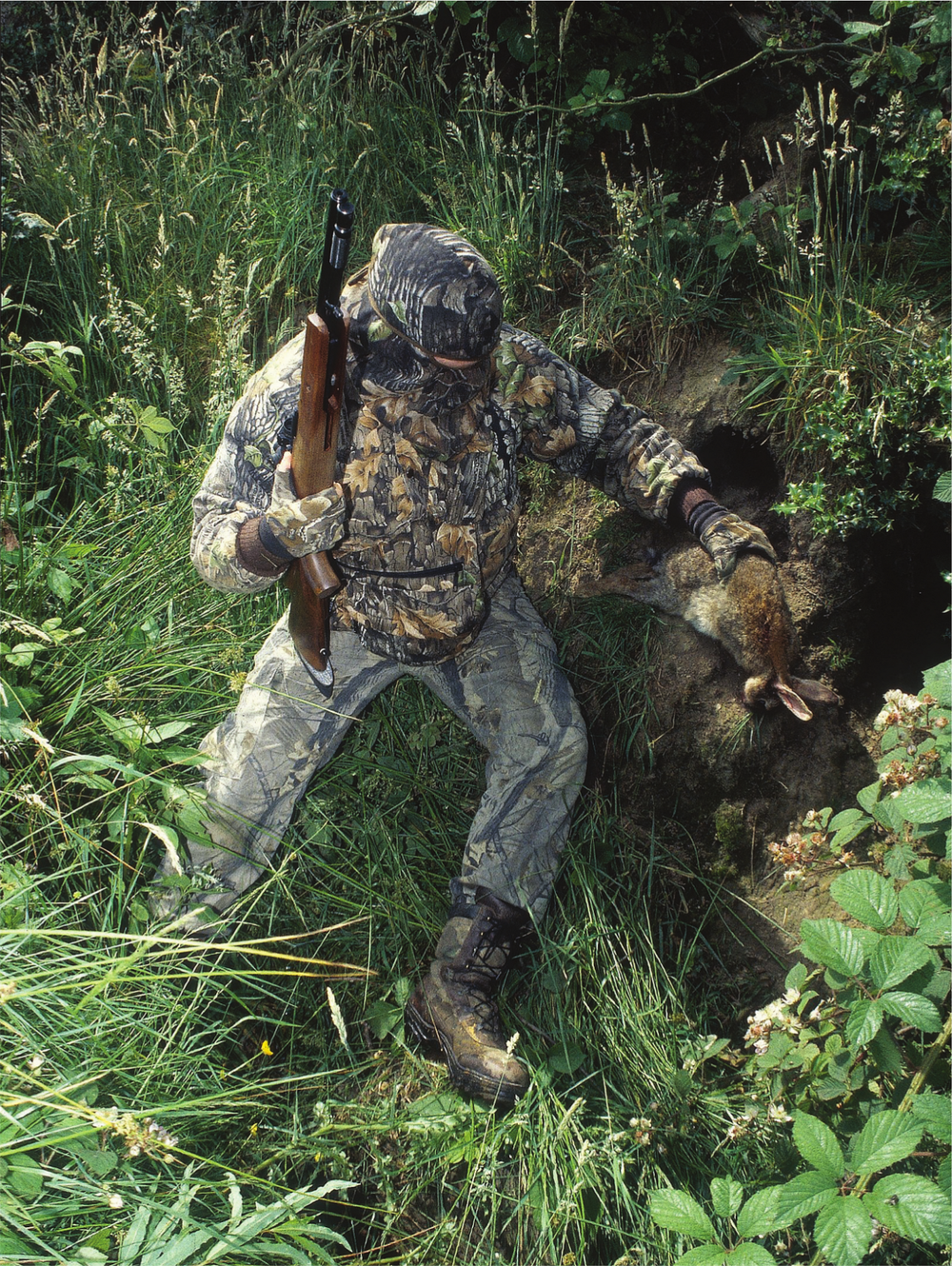
Air rifle hunting is amongst the most challenging and demanding of the shooting sports
I n over two decades of sporting shooting Ive used a great variety of sporting guns and calibres. Although I enjoy the challenge of taking woodpigeon on the wing with a shotgun, long-range rimfire work on rabbits, or full-bore foxing, rarely is the feeling of achievement greater than when Ive taken a precision shot with a 12ft lb air rifle.
As its such a demanding but rewarding form of shooting, its hardly surprising that many coming into the sport, and even those not so new to airgunning, eventually try their shooting skills against live quarry. You need to know the law, not only pertaining to hunting with airguns, but also governing their ownership and general use, so a chapter devoted to the law as it currently stands can be found at the end of this book. However, as legislation can change its advisable to keep yourself up to date by checking regularly with the relevant government departments primarily the Home Office and DEFRA and of course the latest literature on the subject. Books arent as few as they once were, but can still date quite quickly with regard to the law; the shooting magazines do keep their readers constantly briefed on legal changes, though.
I must emphasise that its the responsibility of every individual to know the law pertaining to hunting with airguns. Its no use having the appropriate kit, even if you have somewhere suitable to hunt over, if you dont know the can dos and cant dos. Ignorance of the law is never accepted as a defence by the police or the courts. All reputable shooting organisations have the appropriate legal guidelines available on request, so do make a point of requesting them and most importantly reading, memorising and adhering to them.
It is also the responsibility of those wanting to hunt to be able to recognise the quarry species that are deemed suitable for control with air rifles. All the legitimate pest species that airgun hunters are allowed to shoot are listed in the 1981 Wildlife & Countryside Act. However, since the Act was passed, various species that were once included, now, due to a decrease in their population, are omitted. Most often this is due to factors such as a decline in habitat or a species-specific disease, resulting in the quarry becoming far lower in numbers than it once was as is the case with the once-included starling. Certainly due to changes in the urban environment, the house sparrow is now wisely removed from the quarry list. This once numerous and most common of small birds has, in many parts of the UK, a much lower population than it ever had (although is thankfully now on the increase). At the time of writing, amongst the pests listed and appropriate to control with an air rifle with a power of 12ft lbs are rabbits, grey squirrels, brown rats, magpies, crows, rooks, jackdaws, jays, wood pigeons, feral pigeons and collared doves. There are some others you can add to the list, such as the exotic ring-necked parakeet and monk parakeet, would you believe, which in localised areas of the country have bred in the wild to the point when theyre found in troublesome numbers due to pet birds being illegally released by disinterested owners or escapees from aviaries. You can even try your hand at certain waterfowl such as moorhens and coots these two in particular being genres of duck, so only when in season.
The quarry species that most airgun hunters encounter will be fully dealt with in due course, but the main aim here is to illustrate and introduce when and why the precision accuracy of a good-quality air rifle is more suitable than the out-and-out stopping power produced by a live-round sporting rifle. First, we need to take into consideration that the kill-zone of smaller vermin deemed appropriate for control with an air rifle is relatively small. In many cases the hunter needs to place a pellet into a target area not much larger than a 10p piece and on some occasions, such as when taking a head-shot, this kill-zone is even smaller. An obvious scenario where an air rifle is the optimum tool and preferable to a more powerful firearm, is when shooting inside buildings such as barns, or around outbuildings. A more high-powered rifle could cause major damage and the possibility of dangerous ricochets.
The airgun hunter using a 12ft lb air rifle can often operate safely and legally in locations where a live-round firearm user cant. Many areas of open land just arent deemed suitable by the police for a rimfire rifle to be used, but that doesnt mean that the area will be devoid of vermin. Often its quite the opposite, as these places become havens for all manner of unwanted pests. Another example is in woodland, when squirrels or corvids such as magpies and jackdaws are the quarry. In many such situations you cant use a shotgun due to the damage that many shot pellets can do to the trees. A rimfire is totally out of the question due to the high power of the bullet, but a pellet fired from a 12ft lb air rifle has more than enough stopping power for tree rats and egg-thieving corvids. Some of the most challenging shots Ive taken have been against these species. To be able to thread a pellet through a maze of branches and twigs to hit a kill-zone on quarry such as these takes precision precision accuracy from the hunter and precision performance from the air rifle, and theres the rub! Were already at the stage where youll have realised that not only must the equipment youre using be up to the job, but also your personal level of shooting skills. These include accuracy with the rifle, and fieldcraft in your approach to the quarry. Accuracy comes with practice an absolutely essential part of the airgun hunters learning curve.

